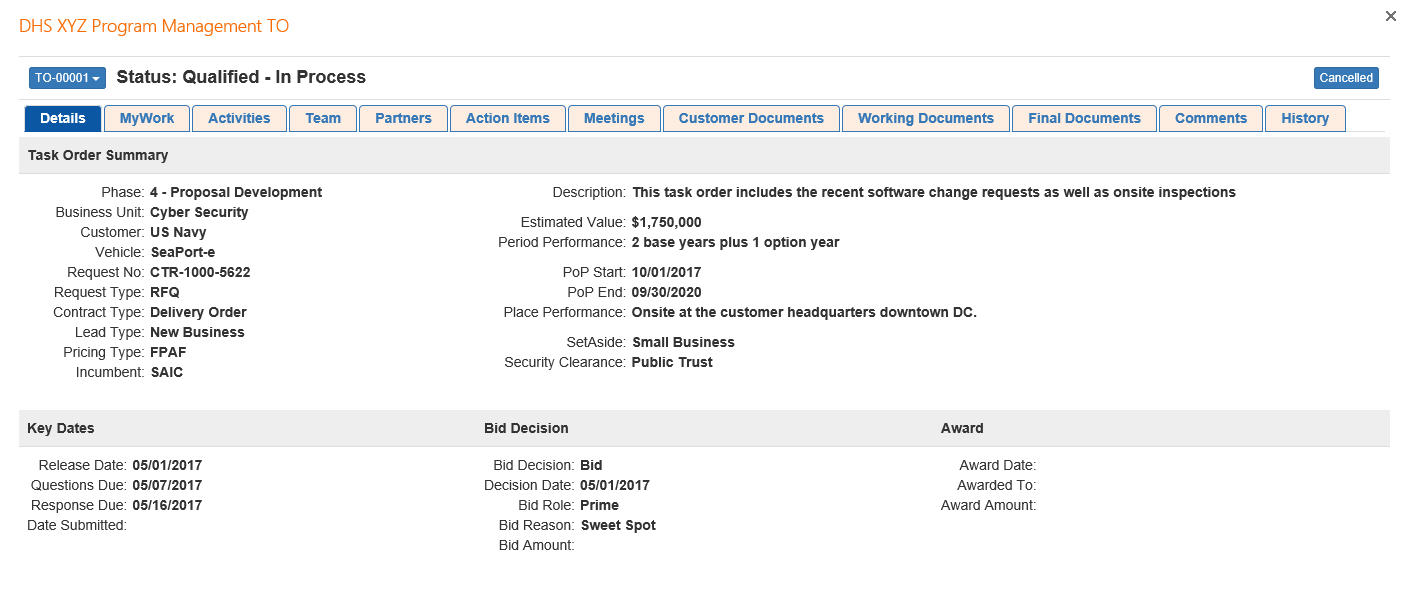The Fall 2017 release of the GovCon Suite is focused on making work simpler. The biggest innovation in this release is the use of Record Views within our solutions. The R3 Record View transforms the way you do your work, making it much simpler, easier and more convenient. Simply, it does this by bringing everything a user needs to them, instead of forcing the user to go to a whole bunch of places to get work done.
You have Record Views for different types of business objects across the GovCon Suite such as Opportunities, Proposals, Task Orders, Customer Contracts, Subcontracts, Contract Modifications, Subcontractors, Accounts and Contacts. The key to a Record View is that it brings all of the pertinent information and work to you for that business object. It does the fetching for you. You now have one, centralized location from which to do your work. No more clicking around to find what you need, moving from screen to screen or even app to app. Everything you need to get your work done is at your fingertips in the Record View.
Here’s how it works. When you click on the Record View of an item in an R3 solution, the system goes and gets the information you need from across the environment. It brings it all to you. A Record View is like a virtual, interactive folder. It has information, it has user actions and it can itself be in a process workflow.
For instance, for a Task Order proposal response, a record view brings together all of the task order data, dates, notes, meetings, contacts, documents, financials, tasks and other items into one place – literally a single page. Even better, it’s not just static views of data and documents. You can work on and take action from the Record View. For example, you can upload and check in/check out documents, schedule meetings and invite team members, make task assignments, request status updates, or collaborate with the team. The key is that you are not hopping around from place to place to do these things. You do it all from the Record View. It just makes work simpler, easier, and, more convenient.

And finally, a unique benefit of R3 Record Views is that the user experience is role-based. This means that users only see those things they have access to, and, they can only do things based upon their role. With this feature managers have control and users have an experience that is simpler and more relevant to their work.
For our customers used to SharePoint, the Record View is a significant change from the way you typically work in SharePoint. First, we significantly improve the user experience by giving users an experience that is focused on the work to be done vs. being content oriented. Second, and maybe more importantly, you save tremendous time—and reduce your frustration level—because you’re not forced to click around from site to site, list to list, or library or library to find and do your work. There’s no reason to leave the Record View. All the data and all the work—no matter where it lives—is served up through the Record View. And third, the Record View automates much of the work. You can take action on multiple items at a time, you can drive workflows that drive users back into the system to get work done, you can drill into related items and the system will fetch the information for you.
For more information on how the Record View makes your work simpler, contact us at info@r3bsolutions.com.
Return to the Fall 2017 Release page.

